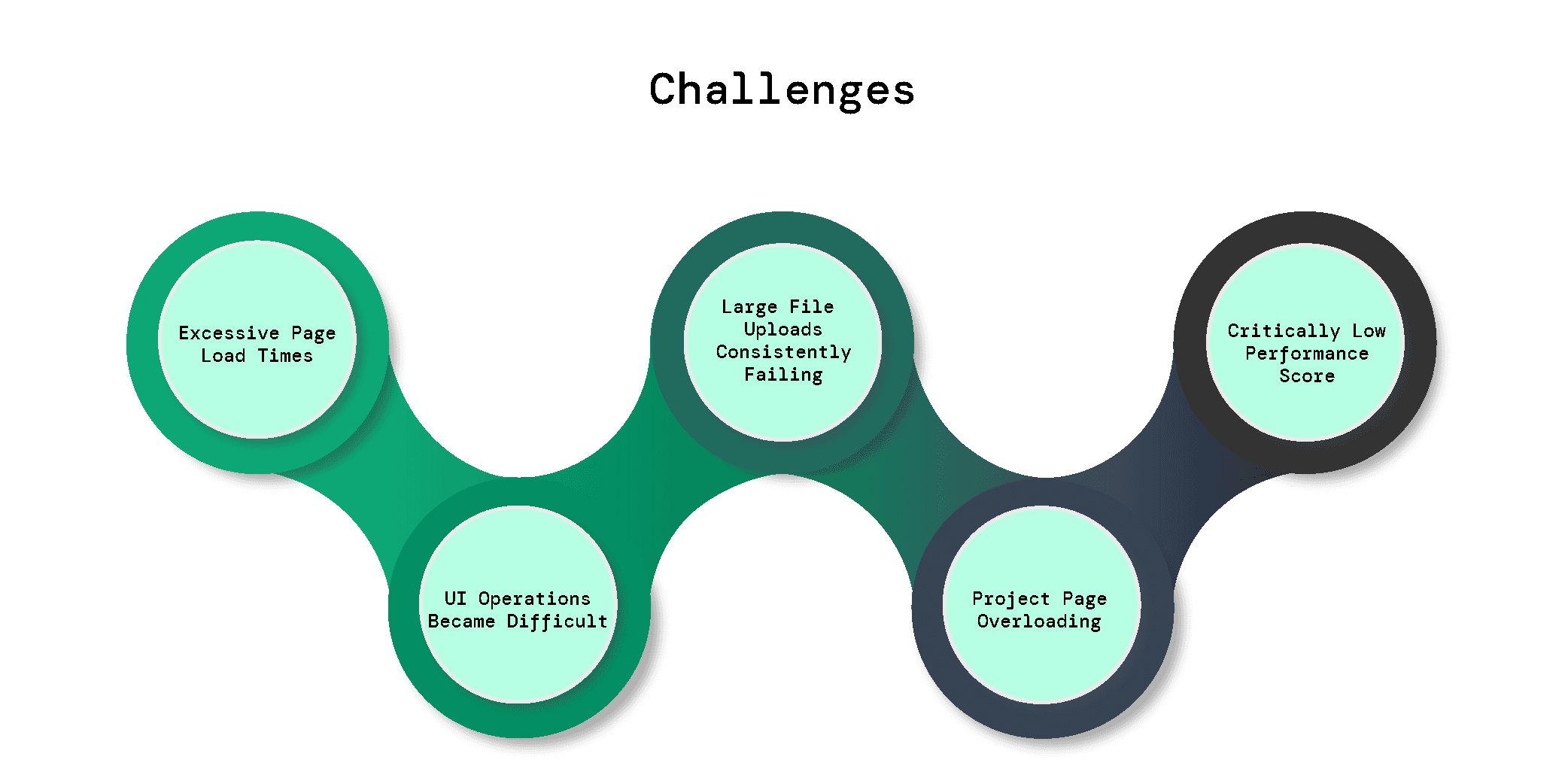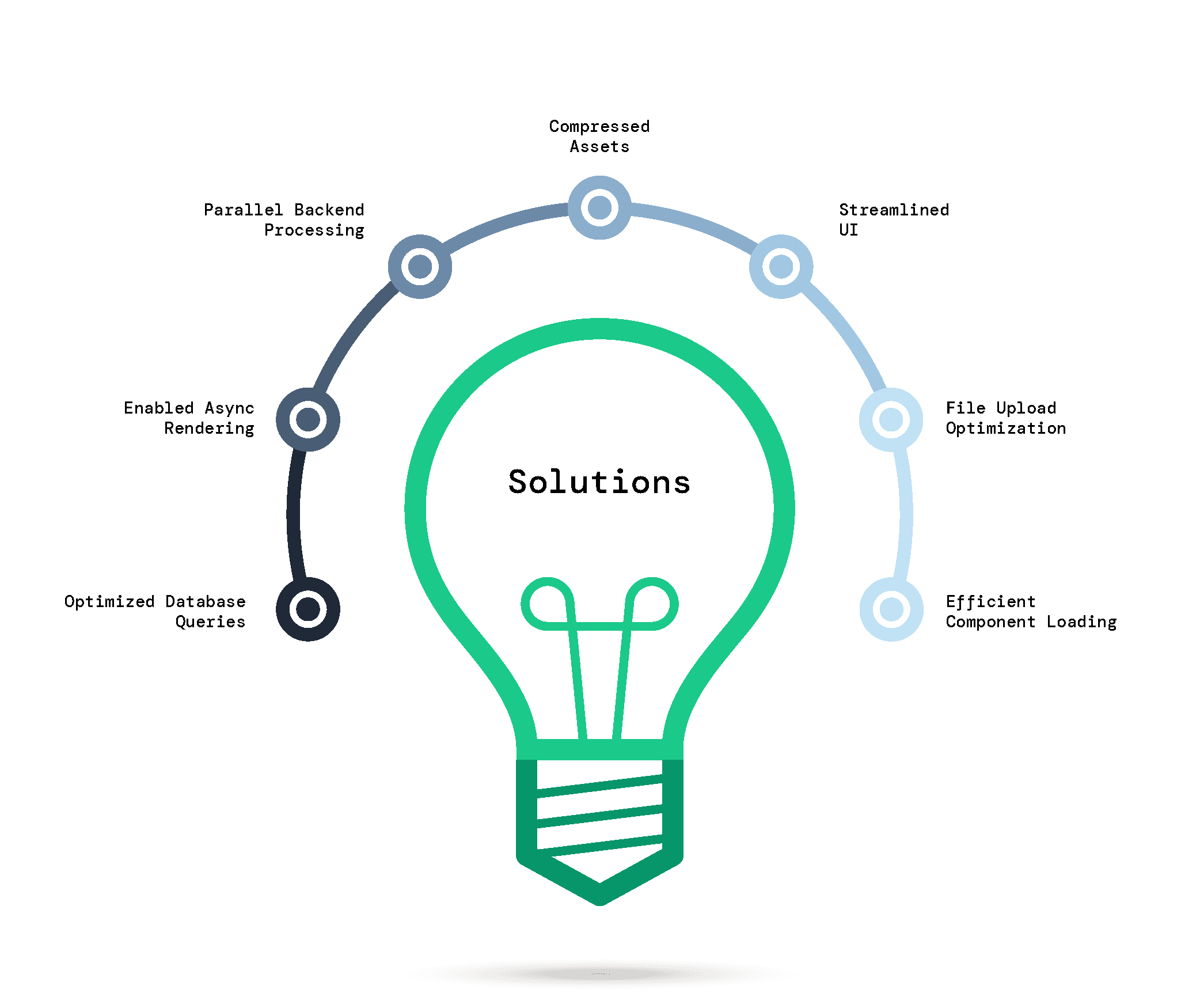How We Optimized a Rails App to Run 6x Faster Than Before: A deep dive
Performance optimization for a US-based procurement platform.

Business Requirement
Our client, a US-based organization, has a cloud-based procurement platform for multi-location businesses. The company has faced various performance issues on its project list page.
As users started to experience high loading times and frequent timeouts, procurement operations became sluggish and inefficient. Given the importance of ensuring a smooth and fast user experience, our client required targeted optimizations within the existing system to improve overall performance.
Objective
The main goal was to
-
Reduce page load times while maintaining the existing system architecture.
-
Streamline the process of updating product listings, pricing details, and documentation.
-
Optimize system responsiveness and improve overall platform speed.
-
Implement solutions for smooth and reliable uploads, even for large file sizes.
Challenges

The client's platform was struggling with severe performance slowdowns, affecting both usability and system reliability. We needed to tackle various performance roadblocks to restore optimal functionality and smooth user experience.
Some of the key challenges are listed here:
Excessive Page Load Times
Pages were taking over a minute to load, causing frustrating delays for users. This often led to request timeouts, making the platform unreliable. This slow response times severely impacted productivity and user engagement.
UI Operations Became Difficult
Updating or deleting changes for more than 25-30 products per project page became a struggle, which led to significant slowdowns. This made routine tasks frustrating and disrupted workflow continuity.
Large File Uploads Consistently Failing
The client team experienced frequent failures when uploading large files due to inefficient data handling. Poor memory management and server constraints led to incomplete uploads. This created roadblocks for teams trying to upload necessary files to make UI updates and project changes.
Project Page Overloading
The platform attempted to load all groups on a project page at once, overwhelming the system. This unnecessary data retrieval caused lag, making navigation sluggish. This, in turn, affected users' ability to efficiently interact with their project's pages.
Critically Low Performance Score
Performance score was critically low at 26 in a standard web performance audit, indicating severe inefficiencies. Issues like unoptimized queries, heavy scripts, and poor caching strategies dragged down performance. This required immediate optimization efforts to restore system reliability.
Solution

The client chose RailsFactory as the ideal partner for their challenges, given our proven track record in performance tuning, app development, and seamless Ruby on Rails upgrades.
We performed an in-depth analysis of the client’s application to identify the root causes of performance issues. Working closely with their team, we developed a tailored optimization strategy aligned with their business objectives.
Our targeted optimization approach prioritized speed, scalability, and long-term maintainability. The result was a faster, more responsive application that enhanced both user experience and operational efficiency.
Here is a series of performance optimizations we executed:
Optimized Database Queries
We identified and eliminated N+1 queries that were slowing down database performance. By optimizing slow queries and adding necessary indexes, we significantly reduced execution times. These enhancements improved data retrieval speed and ensured the system could handle high user activity without lag.
Enabled Async Rendering
To prevent UI freezes, we introduced asynchronous rendering for key components. This allowed the interface to remain responsive even when handling large amounts of data. As a result, users could interact with the system smoothly without being blocked by long-running processes.
Parallel Backend Processing
Instead of processing backend tasks sequentially, we implemented parallel execution. This meant that multiple tasks could run simultaneously, reducing wait times and improving overall efficiency. As a result, users noticed faster response times, especially for data-heavy operations.
Compressed Assets
We optimized and minimized CSS and JavaScript file sizes to speed up page loading times. By reducing unnecessary code and leveraging modern compression techniques, we made the platform lighter and more efficient. This led to a noticeable improvement in page responsiveness.
Streamlined UI
We refined the user interface by eliminating redundant filters and streamlining default columns. By cutting through the clutter, we created a cleaner, more focused layout that prioritized essential information. This not only enhanced navigation but also reduced processing load, delivering a seamless and efficient user experience.
File Upload Optimization
To address frequent upload failures, we added validation checks and optimized memory handling. This ensured large files could be processed reliably without overwhelming the system. Teams could now upload necessary files without interruptions, improving workflow efficiency.
Efficient Component Loading
We restructured how UI elements were loaded, dynamically rendering only the necessary components. This reduced resource consumption and improved rendering speed. Users experienced a more fluid interaction with the platform, especially on data-intensive pages.
Benefits
With these optimizations in place, we were able to transform client’s platform into more responsive, efficient, and reliable system. While users could navigate effortlessly, client teams can now manage data without slowdowns, and trust a system designed for smooth, uninterrupted workflows.
Here’s how these improvements made a tangible difference:
-
Faster and smoother UI allows client teams to update pages, manage data, and navigate effortlessly.
-
Load time reduced to 10-15 seconds even with 123 products per page.
-
Performance score improved from 26 to 75-80, ensuring stability and smoother platform operations.
-
Reduced timeouts and failures, leading to a more reliable system and seamless user interactions.
Conclusion
Through strategic planning and execution, we successfully optimized the client’s procurement platform, delivering a faster, more scalable, and user-friendly experience. The improvements have significantly enhanced performance, ensuring smoother operations. To further streamline workflows and reduce processing overhead, we recommended an architectural revamp for long-term efficiency.
Your one-stop shop for expert RoR services.
Join 250+ companies achieving top-notch RoR development without increasing your workforce.